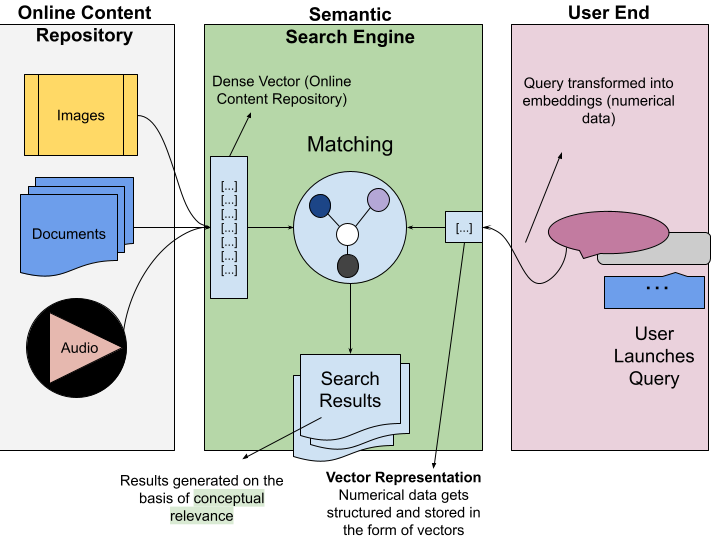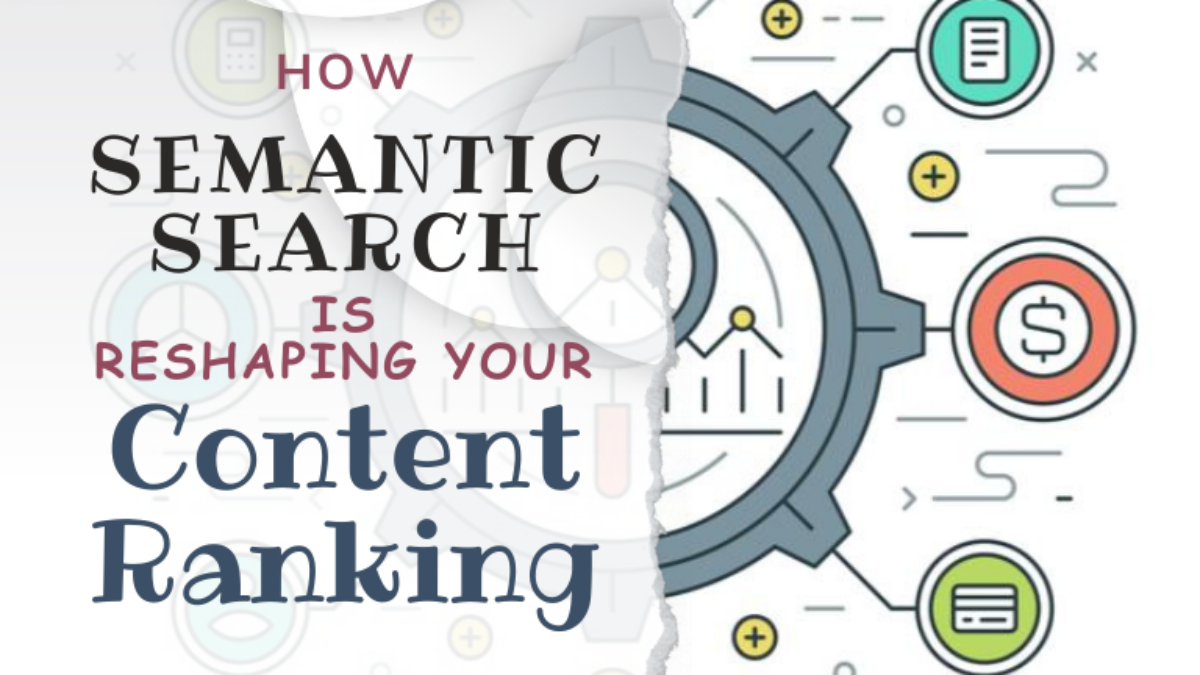Table of Contents
ToggleIntroduction
With search engines becoming more advanced, Semantic Search stands as a transformative force, revolutionizing the way users navigate the vast landscape of the internet. Semantic search engines interpret the true meaning and intent behind the query rather than simply matching keywords. As a result, the content that appears in the SERPs is now ranked based on conceptual relevance to user intent and context rather than keywords alone.
This blog post delves into the intricate details of Semantic Search and its profound impact on how your content ranks on the search results page.
The dynamic updates in the digital exploration algorithms have had search engines upgraded with a technology that interprets the meaning of the words and phrases before pulling up a search engine result page (SERP) against user queries. This advanced search methodology that interprets meaning of the words and phrases within a query is termed as a Semantic Search.
Previously, search engines used to match keywords in the user’s query to the content available online and then what content appeared to be well structured and rich in that specific keyword usually came up as the first result on the SERPs. In simple words, search engines used to return result content that literally matched words in the query.
Search engines operating on semantic search algorithms, however, return content that matches the meaning of the query and this ‘meaning’ is the capability of the search engine to understand the user intent as well as their context of search.
You may wonder what makes search engines capable of understanding the user intent and their context of search? The answer lies with the use of modern day Artificial Intelligence and Machine Learning technology that helps search engines interpret the meaning of the words and phrases in the query to accomplish Semantic Search.
How does Semantic Search work?
As discussed above, semantic search delivers and ranks content based on users’ context and intent relevance. But how do search engines do that?
Search engines make use of the ‘vector search’ approach which itself leverages Machine Learning algorithms to structure all unstructured data and transform it into numerical representation (Unstructured data could include text, audio or images).
After transforming the data in its numerical representation, vector search enables search engines to encode details of searchable information into fields of related terms or items, or simply vectors. It then compares vectors in the query vector with those in the existing content vector available online to determine which are most familiar. The result is then generated by search engines based on conceptual relevance. Here’s how semantic search works pictorially:

Semantic Mapping
The matching process discussed above is also known as semantic mapping where every word in a query phrase(at user-level) is broken down into individual words and the relationship between each of the words is assessed.
If a query launched at user end is a 2-word phrase like “football equipment” a semantic search in its semantic mapping process would map the phrase with identical word combinations. By doing so, search engines understand the nuance between different words for improved user experience.
What does User Context refer to in Semantic Search?
User Context here refers to additional information like users’ geographical location, the contextual arrangement of words in the query, or the context of the user’s search history.
All this additional data is used by semantic search as clues to determine searcher’s intent and derive the meaning of the words in the query by comparing it across a dataset of millions of examples available online.
Since semantic search also makes use of the searcher’s geographical location in generating search results, this means that for users in different geographical locations search results would vary depending on their Geo-location. For instance, two searchers, one in USA and the other in UK search up for the term “football”. A semantic search would identify and generate results by mapping the query term football with “soccer” in the USA and with “football” in the UK and other parts of the world.
What Searcher’s Intent refers to in Semantic Search?
A searcher/user intent is the purpose and context behind users’ search.
More precisely, semantic search tries to identify through users’ search history to understand what exactly would they need or intend to achieve with the query they launch in search engines.
The main idea of semantic search is to make the user experience better with search engines and to accomplish just that, search engines try to figure out if the users launching the query want information or if they are trying to make a purchase. Once it understands the query and the context of it, it displays results based on the order of conceptual relevance.
You can adjust your semantic search to generate improved results by providing query categorization settings like returning high-rated products first and low-rated products further down the results list.
Semantic Search and Keyword Research: The difference explained
Semantic Search | Keyword Search |
Returns results by looking to match the meaning of the words in the query. Might not generate results with direct word match however it will match user intent. | Returns results that match words to words, words to synonyms, or words to similar words |
Semantic search makes use of vector search to return results of the query launched | Makes use of query expansion, relaxation tools as well as natural language processing and understanding tools like typo tolerance, tokenization, and normalization. |
Importance of Semantic Search
With the search engines getting geared with new technology everyday, it is important to understand that boosting your content’s ranking with SEO writing that is done with the focus on keywords alone is not enough. Today you need to incorporate keyword search intent strategy which not only helps semantic search algorithms of search engines to rank your content better, but also increase user experience with your content many folds.
Users get to experience more intuitive search results with semantic search as it facilitates a broader search surface. The Artificial Intelligence, Machine Learning and vector search technology keeps the semantic search algorithm in the “learning phase”.
A variety of key performance indicators like conversion rates and bounce rates continuously improve semantic search algorithms to better align with the user intent and augment user satisfaction.
Semantic Search and Search Engine Optimization
So you might wonder that if present day search engines are making use of user intent and context to rank content online, how could you get your content to rank on the results page?
First off you need to be clear on the point that semantic search is one of the significant factor (not the only factor) in ranking pages in search results.
Secondly, even if semantic search uses user intent and context to rank content, still it is the keywords in the users’ launched query that kick-starts the entire process of matching and semantic mapping up till the results generation.
Today, however, keyword research has been modified to include researching for more than just target keywords. With the search engines algorithms evolving steadily, you need to factor in keyword search intent because without it your keyword research might remain far more ineffective than you could imagine!
Lower performance Pay Per Click (PPC) campaigns, and the poor user experience, are the factors that’ll contribute to your efforts wasted if your keyword research is considered without any search intent. And that’s the very reason why semantic search engines have completely changed the way we interact with the internet online.
Ever felt that if you talk about a certain product or disclose your feelings about some idea, the next thing your search engine would be placing in front of you either in the form of ads or relevant search results would be the same thing that was going on in our mind? Exactly! That’s possible as of semantic search algorithms powering your search engines.
Take it to your Inbox!
Subscribe to my Newsletter
Never miss the Tips, Tricks, and Insights that I share on my site.


Add a Comment